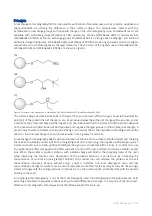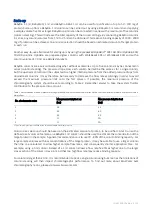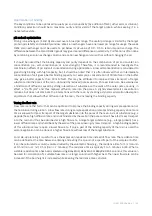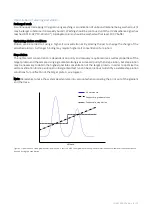
IN 45 100 010 • AA • 1 / 12
I
NSTRUCTION
IN
45
100
010
BabyBio S
BabyBio Q
BabyBio DEAE
BabyBio™ S, BabyBio Q and BabyBio DEAE are ready-to-use ion exchange chromatography columns
for easy and convenient purification of proteins, peptides and oligonucleotides, by utilizing the
difference in these molecules surface charge. BabyBio S works as a strong cation exchanger, BabyBio
Q as a strong anion exchanger and BabyBio DEAE as a weak anion exchanger. The columns are
prepacked with WorkBeads™ 40S, WorkBeads 40Q and WorkBeads 40 DEAE resins, and are available
in two column sizes, 1 ml and 5 ml.
Prepacked ready-to-use columns for fast and reliable results
High binding capacity and purity
Easy-to-use for screening of conditions
Short protocol
This general short protocol is for the use of BabyBio S, BabyBio Q and BabyBio DEAE columns. Detailed
instructions and recommendations for optimization are given later in this instruction. Recommended and useful
buffers are listed in Table 3. BabyBio S columns are suitable for basic proteins, i.e. proteins with a high isoelectric
point (pI), while BabyBio Q and BabyBio DEAE columns are suitable for purification of acidic proteins, i.e.
proteins with low pI.
1.
Choose a suitable pH and buffer for the binding of the target protein. One pH unit below pI (BabyBio S
columns) or above pI (BabyBio Q and BabyBio DEAE columns) is a good starting point.
2.
Connect the column to the chromatography system, syringe or pump.
3. Equilibrate the column with 10 column volumes (CV) 20 - 50 mM binding buffer at the chosen pH.
4. Apply a clarified sample to the column at low ionic strength and the chosen pH (similar to the binding
buffer) to allow binding of the target protein.
5. Wash the column using 10 - 20 CV binding buffer.
6. Elute the target protein.
Alternative 1
: Desorb the target protein with 5 CV elution buffer.
Alternative 2
: For increased purity, gradient elution is recommended. For example, use a gradient from
0 to 100% with 20 CV binding buffer including 1 M NaCl.
7. Clean the column using 0.5 - 1.0 M NaOH for 15 - 30 minutes (optional).
8. Wash the column with 5 CV deionized water to remove the cleaning solution.
9. Equilibrate with 10 CV 20% ethanol for storage. Close the column using the included cap and plug.






























